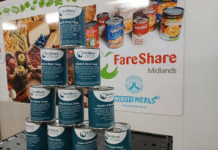
Active packaging technologies are the best preventive measures to reduce food waste. But many of these never reach the common public. The communication director at AIPIA, Andrew Manly, gives his opinions about innovations in this field. And, it is said that there is a global 30% food wastage as it never gets eaten.
Food wastage in several places is due to different reasons. In Europe and North America, food wastage happens in the warehouse and logistics part, at the retailer end. Many active packaging methods are available to limit bacterial growth, delay ripening or take the oxygen out of the pack, and increase the life of proteins and new production. If these solutions have been used in the markets, we are yet to see their influence in daily life.
There is plenty of work involved in the development of active or Flexi packaging to limit the growth of microbial or bacterial growth. The AIPIA newsletter has been published regularly with reports on the various research and development activities at the technical universities that are giving results.
Solutions to control food wastage
Companies are trying to maintain their focus on nanotechnology with the fibers obtained from the durian fruit skins to produce a natural compostable, edible, and biodegradable material. However, they are not used at large by people.
These products are not commercially viable, which can be seen in the results of AIPIA’s involvement with the NanoPack project. This three-year project produced an antimicrobial film from essential oils like oregano and a few halloysite nanotubes. The initial film limited the mold growth in bread within three weeks, increased the sales of fresh cherries by 13%, and expanded the shell life of yellow cheese by more than four days.
Other options for active food packaging
The antimicrobial film requires approval from the European Food Standards Agency (EFSA), and since this process takes a long time, such solutions get lost. Currently, there are few established inhibitors in the market, like silver. Silver nitrate is an antimicrobial agent, but the metal used in food packaging makes it hard to recycle. Thankfully, there’s an alternative – graphene.
Graphene has good antimicrobial properties and can be reused but is expensive, like silver. There are more environment-friendly and less costly options available for active food packaging. They are methods like nitrogen removed from products to keep them clean and usable for a long time. Such methods are being widely used as they are cost-effective.
Customers’ opinions about alternate packaging solutions
Now, the question is – Are the eco-friendly options being used by the food producers in packaging? Consumers do not like any external additions to their food, but with NanoPack, which would save food and protect them from harmful materials, they were okay with it.
Food wastage costs more water, energy, and the fuel used in transport, and producing food packaging to reduce the amount of food is better for the future.
IndiFoodBev — authentic, impactful and influential
An English-language food and beverage processing and packaging industry B2B platform in print and web, IndiFoodBev is in its third year of publication. It is said that the Indian food and beverage industries represent approximately US$ 900 billion in revenues which implies more than 20% of the country’s GDP. Eliminating the wastage on the farmside can help to deliver more protein to a higher number of the population apart from generating sizable exports. The savings in soil, seeds, water, fertilizer, energy and ultimately food and nutrition could be the most immense contribution that country is poised to make to the moderation of climate change.
To improve your marketing and grow sales to the food and beverage processing and packaging industry, talk to us. Our research and consulting company IppStar [www.ippstar.org] can assess your potential and addressable markets in light of the competition. We can discuss marketing, communication, and sales strategies for market entry and growth.
Suppliers and service providers with a strategy and budget for targeted marketing can discuss using our hybrid print, web, video, and social media channels to create brand recognition linked to market relevance. Our technical writers are ready to meet you and your customers for content.
The second largest producer of fruit and vegetables in the world is continuously expanding processing capacities and delivery systems with appropriate innovative technologies. We cover product and consumer trends, nutrition, processing, research, equipment and packaging from farm to thali. Get our 2025 media kit and recalibrate your role in this dynamic market. Enhance your visibility and relevance to existing markets and turn potential customers into conversations. Ask for a sample copy of our bi-monthly in print or our weekly IndiFoodBev eZine each Wednesday.
For editorial info@ippgroup.in — for advertisement ads1@ippgroup.in and for subscriptions subscription@ippgroup.in
Naresh Khanna – 10 February 2025
Subscribe Now










